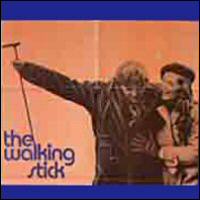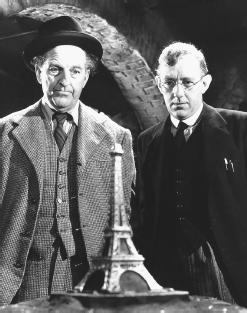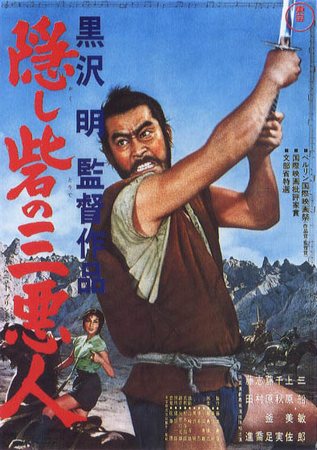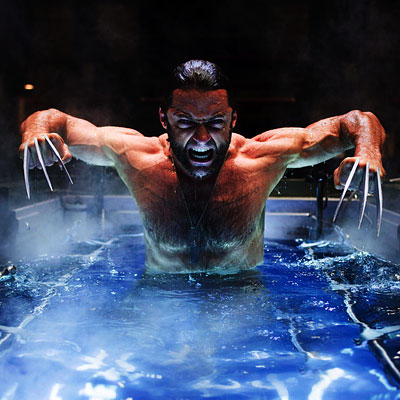This is a comedy western -- typically not my favorite thing -- that keeps the humor pretty low-key with almost all of the focus on one specific card game and its development. The story is almost exclusively in one location, the back room of a saloon, with a few quick detours outside for more money or booze. I'm not comparing it to 12 Angry Men as a whole, but in terms of storytelling it is very similar with the jury room changed to a saloon's back room. I was really enjoying the movie for the first 80 minutes, and then it happened. The movie phenomena known as....THE UNNECESSARY TWIST! More on that later.
Riding into Laredo, a husband and wife, Meredith (Henry Fonda) and Mary (Joanne Woodward) with their son must stop for repairs on their wagon. They're bound for San Antonio and the 40 acres they've purchased to live on. Stopping at the saloon, Meredith hears about a high-stakes poker game going on in the back room. Each year, five local businessmen lock themselves away and play until someone takes all the winnings. Meredith asks if he can sit in and quickly changes his mind, thinking he could win the game judging by the players' abilities. But his luck is not so good, and he has to use all the money the family's saved. Then, his luck turns. He gets the hand of a lifetime, but in the excitement of the hand, a heart attack incapacitates him. Who can finish out the hand for him, even with a lack of funds? Why his wife of course.
This western has the look and feel of a TV western that's entirely set on a western town set, like Gunsmoke or Bonanza. The visual look of 'Big Hand' isn't very important though because the focus is on this poorly lit, smoky backroom where the annual card game is played out. The five players are all recognizable faces if not huge stars and are clearly the highlight of the movie. They include Henry Drummond (Jason Robards), a cantankerous land owner, Benson Trop (Charles Bickford), the woman-hating undertaker, Otto Habershaw (Kevin McCarthy), the educated lawyer, Dennis Wilcox (Robert Middleton), the ranch owner, and Jesse Buford (John Qualen), the cheapskate cattle baron. The quintet has a history and a background that comes from 16 years of playing that comes across perfectly. Robards' Drummond walked out on his daughter's slow-moving wedding to play, and McCarthy's Otto bailed on a court case where his defendant could hang. Little touches make these characters work.
Later in his career, Fonda veered into playing darker characters, straight villains like Once Upon a Time in the West, or even deeply flawed people, like here or in The Rounders. His Meredith has a gambling background -- an addiction to poker is hinted at -- and he can't ignore the allure of this high-stakes game. Woodward is the angelic wife who trusts her husband implicitly even when he's made such a backslide into the life he promised he would avoid. As he fights through a heart attack, he tells her to play out the hand. Mary has never played poker in her life, but when Meredith tells her it is the hand of a lifetime, she trusts him. The only problem? They're out of money so she turns to the town banker C.P. Ballinger (Paul Ford) while the town doctor (Burgess Meredith) tends to her husband.
And then there was the twist, revealed about 80 minutes into the movie but not about to be revealed here. Looking back, I can't remember any hints of what's to come so I guess that's a testament to the twist working so well. Maybe unlike so many other twist/revelation storylines, we're not supposed to have any inkling. But it is such a departure from the humor of the story up to that point, it feels completely unnecessary and for me, wasted any goodwill the majority of the movie had racked up. If that wasn't bad enough, there's about 15 minutes more after the twist is revealed that drags on and on. Not only was I disappointed in the direction the story took, I've got to endure scenes that serve no real purpose. Pass on that.
It's all too bad because with the cast and their impressive talents -- especially Robards and McCarthy -- this comedic western had a chance to do something great. I was actually angry at the twist reveal. Not because it didn't work, the story has no plot holes and looking back everything worked. It is because the twist is stupid and unnecessary for a movie with a good story. I would have ended the movie at the end of the poker game and been done with it instead of sitting through almost 20 more minutes of movie. I couldn't find a trailer so the link below is a TCM-provided clip.
A Big Hand for the Little Lady <----clips (1966): **/****






















